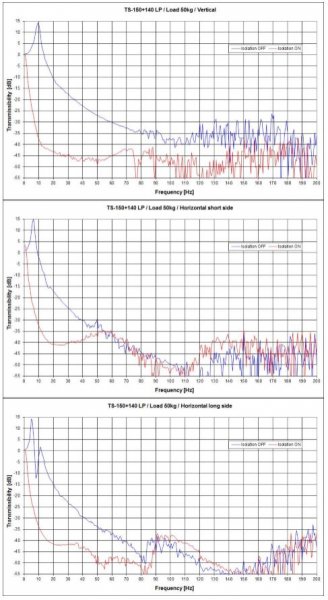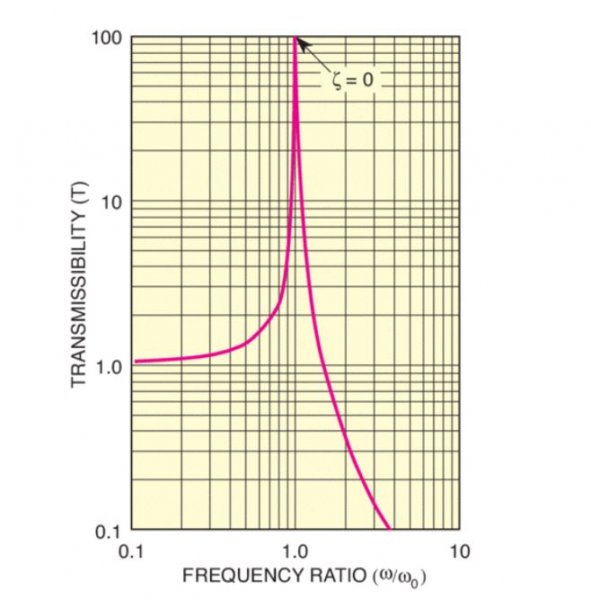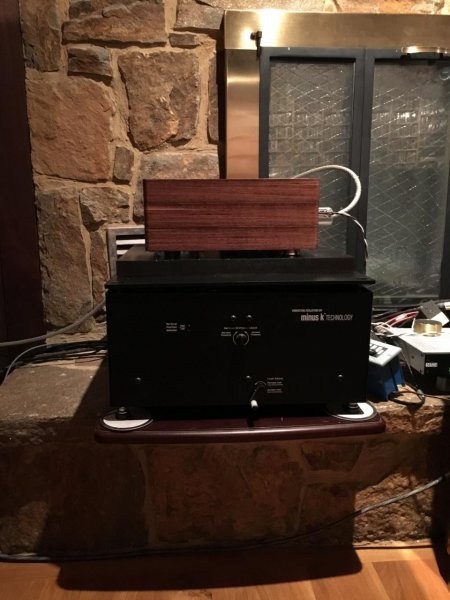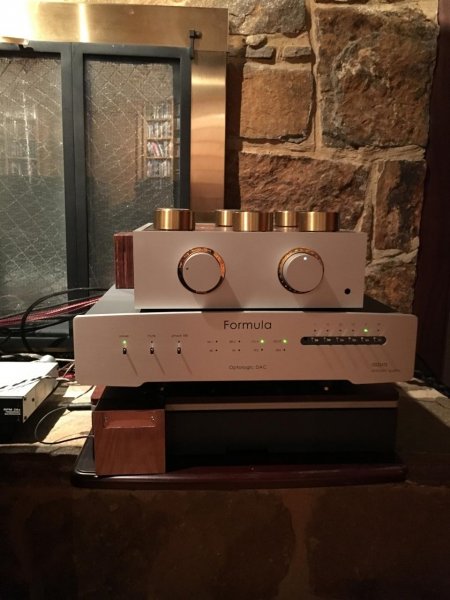The varying results are the reason the Tana modification package exists. In passive mode the TS/AVI is just a platform supported by springs attenuating transmissibility above and amplifying at and around its resonance point. When active is engaged something happens which
NO passive solution can do, the natural resonance is cancelled out by counterforce produced by the piezoelectric motors and in stead of an +15dB amplification we get a 20-40dB reduction in transmissibility.
From he TS-140/150 manual:
View attachment 38267
The blue graph is a typical representation of any passive spring-mass damper, the natural frequency of the system, is determined by the mass and the spring compliance. It decreases for a larger mass or a more compliant (softer) spring.
A simple representation:
View attachment 38268
I don't see how anyone could argue against the obvious benefits of active isolation for low frequencies. However, as the TS 150/140 graph also shows, for higher frequencies it doesn't look as pretty. This is of no concern at all for laboratory purposes. For hifi applications however it's very audible. We have been able to increase the attenuation above ~40Hz, after long experimentation, by replacing the 6mm aluminium top platter by a 10mm aluminium - 0.5mm viscoelastic - 10mm panzerholz sandwich. This by itself makes a profound difference, depending on the sensitivity of the component sitting on the table it can make the difference between preferring active on or off (please note that for Horizontal 1 and Horizontal 2 active actually performs worse then passive above ~90Hz). The other part of the equation is the powersupply, the stock smps is pretty noisy leading to a "greying" and "flattening" of sound, with active enabled its much worse then in passive mode.
Now what is being experienced by Chris in his NDW-AVI-AS setup is surely interesting but you really cannot apply this experience to the TS-140/150 with the Tana upgrade package as it's an entirely different beast.
.






